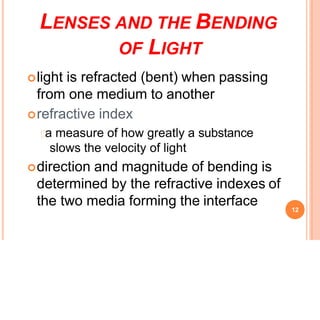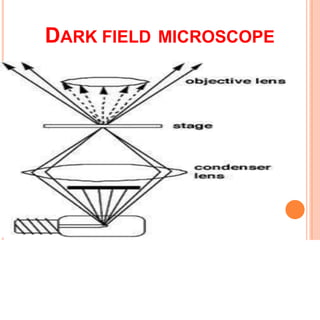The document provides an overview of microscopes, including:
1) The history of microscopes from early compound microscopes developed in the 1590s to improvements made by Antony van Leeuwenhoek and Robert Hooke that increased magnification.
2) How microscopes work using convex lenses, with light being focused and magnified through an objective lens and further magnified through an ocular lens.
3) Different types of microscopes including brightfield, darkfield, phase contrast, and fluorescent microscopes and how they produce images.

































